
---------------------------------- | "Send me a message in the past | | to prevent this from happening." | ----------------------------------
1983
Did build my own keyboard.
Keyboard layout was similar to the CBM 3016,
added a few keys when connecting it to a C64 some years later.
Stopped any attempts of etching PCBs at home after this project...

1987
Did build a tiny 6502 computer inside a metal box,
which once was a tuner from an old TV.
6532, 8 kB RAM, 2* 8 kB EPROM, 7 segment display.
(No, it wasn't compatible to the Junior Computer. In 2008, it still worked.)


Did build a big 6502 computer with 32 kB RAM and 32 kB EPROM.
It did run with a heavily modified C64 Kernal + Basic.
It also did have 512*512 vector graphics (8 colors / 192 kB DRAM),
featuring the EF9367 CRT controller.
It was a single sided PCB layout, done with knive and tape on transparent
paper and such... I wouldn't recommend this approach.
Unfortunately, wiring the outputs of the graphics card directly into
the video amplifiers of an old TV (without separated mains) turned out
to be a bad idea, and at some point the computer died.
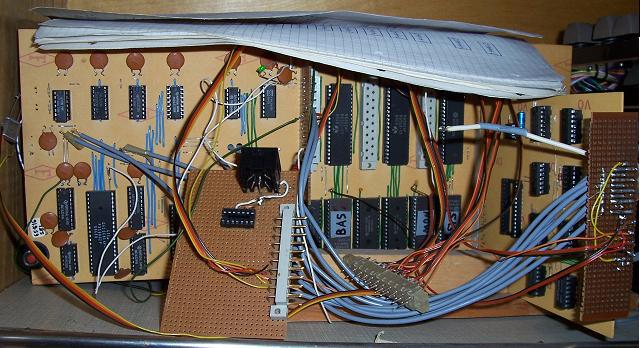
CRT controller PCB isn't shown in this picture, it's behind this CPU
PCB and has nearly the same size.
If you wonder about all those modifications on the PCB, it's because I
did upgrade from a 1 MHz 6502 to a 4 MHz 65816, and tried to run
the CPU at 4 MHz.
1988
Did want more computing power (and address range) as with the 6502.
From the addressing modes and the architecture, the 68k family looked interesting.
So I did buid a small 68000 based computer with a 7 segment display,
based on an article from the "Elektronik" magazine.
(In 2008, it still worked.)

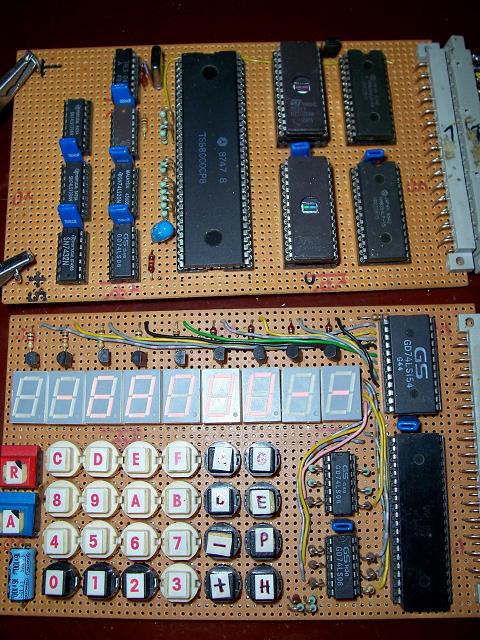

Later, I did solder/wire an adapter, so I was able to use that computer
for playing with the 68020.
And the 68020 did offer a (by that time) incredible computing power...
compared with PCs at that time frame.
Unfortunately, the adapter soon started falling apart, due to cheap PCB material
and a homebrew PGA144 socket which was improvised from precision DIP sockets.
Another problem was, that the cheap DIP64 socket inside the computer
didn't make reliable contact to a 68000 IC anymore after a few adapter
plugging/unplugging cycles.
Replacing it by a precision socket on a soldered/wired PCB wasn't fun.
That was the moment, when I did decide never to use cheap IC sockets again.
1993
Did some experiments with 80535 and 80537, like attaching a DRAM
memory module from an 80386 motherboard with only a few 74xx TTL ICs.
Or controlling 24 RC servos with one 80535...
But because of my 6502/68k heritage, programming those microcontrollers
in raw machine code wasn't fun.
At some point, I decided to throw away my 8031 based stuff,
and to make another try with the 68000.
Anyhow, it looks like Infineon later axed the 80535 and 80537.
So what.
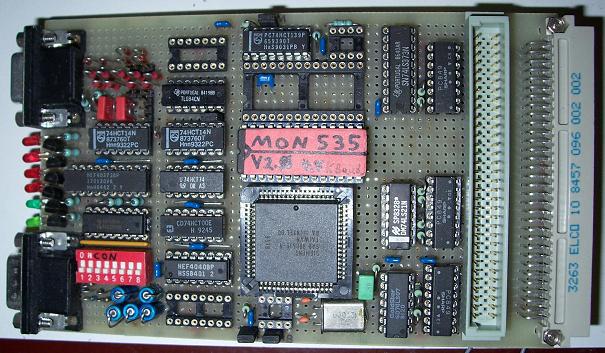
(Did pull out a few ICs, which went into other experiments...)
1995
Did solder/wire a 68020/68881 based processor card, (double Eurocard size),
with 32 Bit DataBus and fast SRAM.


It really worked (at 29 MHz it stopped to work reliable), but then I felt a
strange need to buy the full version of the Eagle PCB layout software after
soldering all those wires.
1996
Did solder/wire board some smaller PCBs (including a 16 Bit 68020 processor card).
Also some double Euro sized peripheral stuff... like a PCB with eight 6522,
able to trigger a vectored interrupt.
Also did start to play with CPLDs: the ispLSI1016.
The design software was nice: each logic block was visible on the screen,
you could click one with the mouse and then 'haxxor' your equations into it.
Felt pretty much like having a few GALs tied together inside of one IC
package, and for a year, I was happy...

1997
...and did spend some more time playing with 68k related hardware/software.
Like interfacing to stepper motors...


1999
Did decide to build an Eurocard sized 68HC000 / 16 MHz single board computer,
with all ICs plugged into in precision DIP sockets.
1 MB SRAM, 1 MB Flash, a 68901, a PIC16C84 to connect a PC keyboard...
and so on.
It was a cute multilayer PCB, and the prototype worked with only a few
minor changes.

2001
Did build a 6502 based single board computer.
Buying UARTs turned out to be difficult, so I did decide to integrate two
PIC16C65 into the design... to work as UART, keyboard interface and such.
Also modified the C64 Kernal + Basic, to make it work with the 6522
instead of the 6526 (which seemed to be out of production).
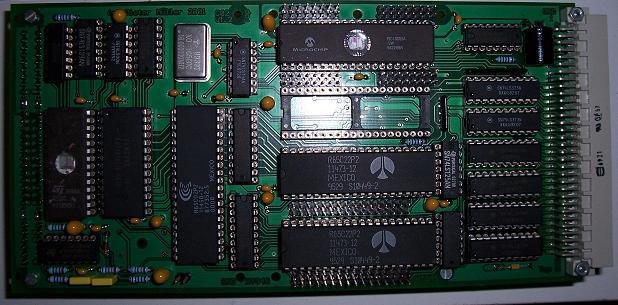
(Sorry for the bad quality of the picture.)
The 6845 also appeared to be out of production, so I did decide to
build my own CRT controller with 74xx TTL and an EPROM.
Also connected to the internet, which turned out the be a strange new world.
Until that time, I was all on my own for building my hardware/software,
equipped with inapprobiate tools, and with ancient datasheets/articles
printed on paper... the 'lone wolf' approach.
Wouldn't have started a 6502 related project without the existence of 6502.org.
2002
Incident ! My supply chain of 6502 ICs went disrupted.
They disappeared out of all the cataloges here in Germany, and it looked
like there was no distributor left selling 6502 related parts.
Ordering things from "abroad" wasn't an option, and WDC had no minimum
order policy back then.
[Edit: The 6502 showed up at Mouser/Germany in 2012 again.]
So I stumbled into the world of hobby TTL CPU design, what resulted in the
M01 prototype, which still had quite a few serious bugs. It was intended to be
a 180*100mm sized single board CPU. A high density layout...
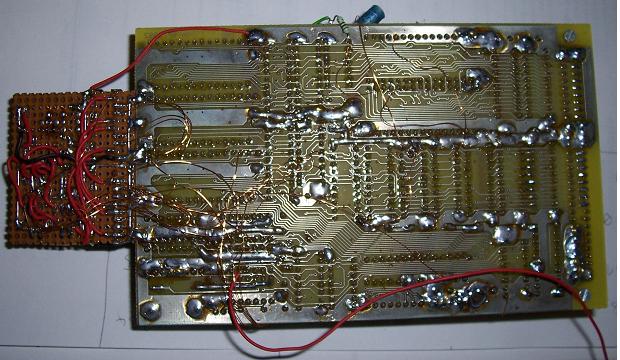

(Some ICs were salvaged out of the corpse and recycled for building M02.)
While fixing the bugs, I realised that I would like to have a 24 Bit
address bus, and it turned out that it wouldn't have fit into one PCB anymore.
So I did a complete redesign, resulting in the M02 CPU.
Finding most of the bugs inside the microcode took me six months,
and there really were quite a few strange effects.
But in the end, I was able to run 6502 machine code with my first TTL CPU.
Also did build some peripheral PCBs... like a CRT controller,
able to display text and graphics at the same time.
Did write a M02 emulator for PIC16C65, then ported it to PIC18F452.
Unfortunately, it did turn out to be ca. 3 times slower than M02.
(c) Dieter Mueller 1980..2015